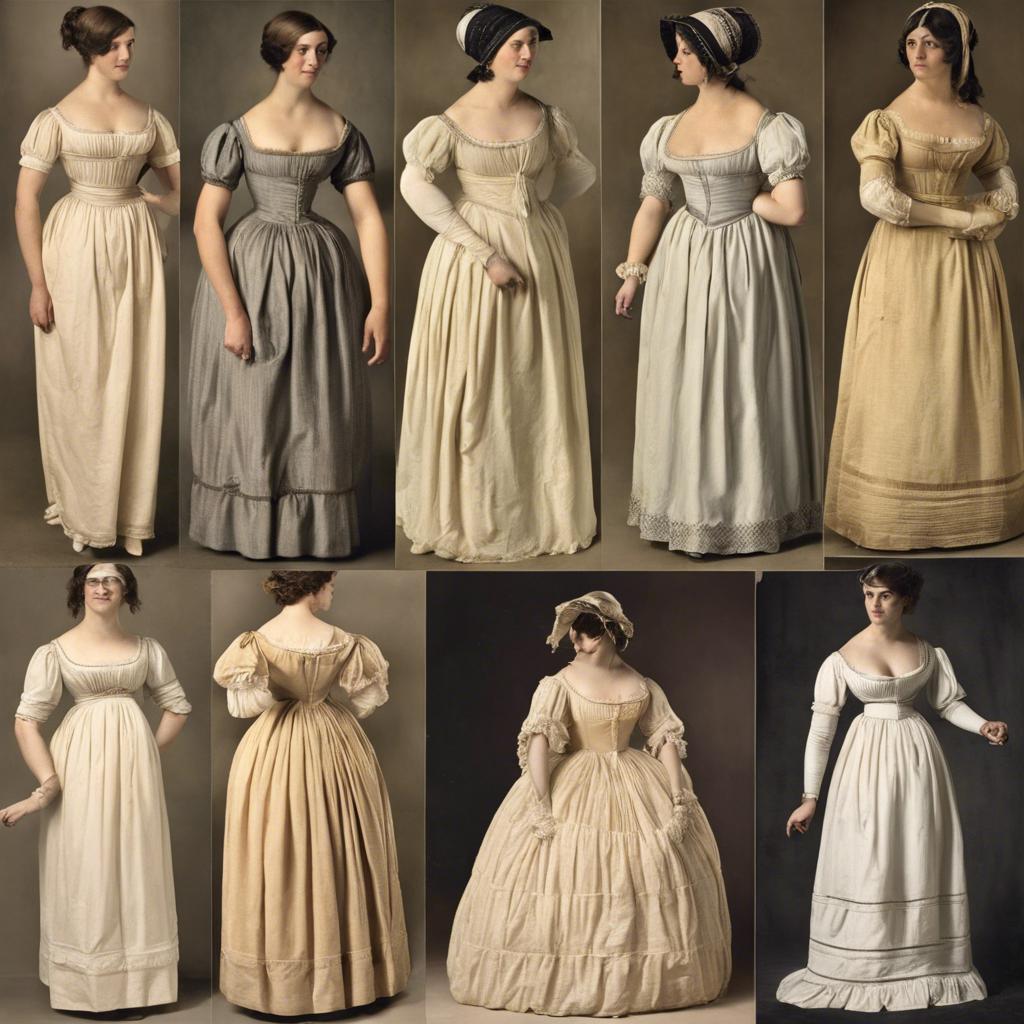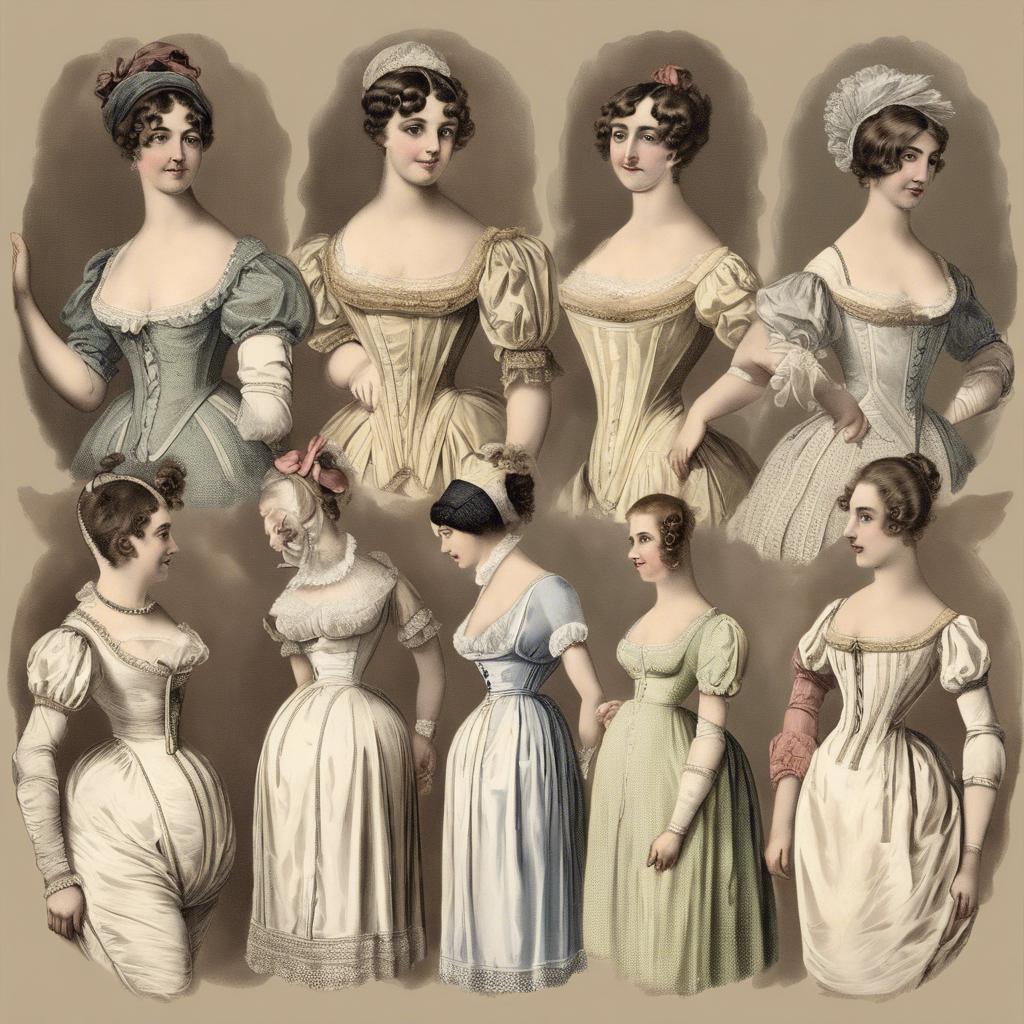During the Regency era, women’s regency era male fashion”>fashion underwent significant changes that extended beyond outer garments to include undergarments as well. These hidden layers played a crucial role in shaping the silhouette and enhancing the overall appearance of women during this elegant and refined period in history. In this article, we will explore the evolution and significance of Regency era undergarments for women, shedding light on the intricate world of fashion beneath the surface.
Step Into the World of Cheryl Bolen
Dive into the enchanting stories of love, intrigue, and elegance set in the Regency Era. Cheryl Bolen's novels offer timeless romance and captivating tales that will leave you wanting more.
Explore Cheryl Bolen's Books Now
Undergarments of the Regency Era: A Closer Look at Womens Fashion
During the Regency Era, women’s fashion was characterized by a slim, columnar silhouette that required specific undergarments to achieve the desired look. One essential piece of undergarment during this time was the chemise, which served as the foundation for the outer garments. Made from lightweight fabric, the chemise was worn next to the skin to protect clothing from sweat and oils.
Another important undergarment of the Regency Era was the corset, which was designed to shape the body and create the desired silhouette. Unlike the heavy, restrictive corsets of previous eras, Regency corsets were typically lighter and less constricting, providing support while allowing for greater freedom of movement. Boning made from materials such as cane or whalebone helped to maintain the garment’s shape.
In addition to the chemise and corset, women in the Regency Era also wore petticoats to add fullness to their skirts. These petticoats were usually made from layers of lightweight fabric such as cotton or linen and were worn under dresses to create a smooth, voluminous silhouette. the undergarments of the Regency Era played a crucial role in shaping women’s fashion and achieving the elegant, refined look that was emblematic of the period.
The Evolution of Undergarments in Regency Era Womens Clothing
During the Regency Era, women’s undergarments played a crucial role in shaping the fashionable silhouette of the time. These undergarments were designed to provide support, structure, and modesty underneath the elaborate gowns and dresses that were popular during this period.
Corsets: Corsets were an essential undergarment for women in the Regency Era. Made of stiffened fabric and often reinforced with boning, corsets were worn to shape and support the torso. They were typically laced up at the back to create a tight, hourglass figure, emphasizing the natural curves of a woman’s body.
Chemises: Chemises were lightweight, loose-fitting garments worn underneath the corset to protect the skin from the boning and to absorb sweat. Made of linen or cotton, chemises were often embroidered or decorated with lace at the neckline and sleeves, adding a touch of femininity to an otherwise practical undergarment.
Petticoats: Petticoats were worn underneath the outer skirt to add volume and shape to the silhouette. Made of layers of fabric, petticoats were often starched to give them structure and were sometimes decorated with ruffles or lace at the hem for a touch of elegance. These undergarments were essential for achieving the full, bell-shaped skirts that were fashionable during the Regency Era.
Choosing the Right Undergarments for Regency Era Reenactments
In order to authentically recreate the fashion of the Regency era, it is essential to pay attention to the undergarments worn by women during that time period. The proper undergarments not only provide the necessary structure to achieve the iconic silhouette of the era but also ensure that the outer garments drape and fit correctly.
One of the key undergarments for Regency era reenactments is the chemise. This lightweight, loose-fitting garment was worn underneath all other layers of clothing to protect the outer garments from sweat and body oils. A linen chemise with short sleeves and a high neckline is ideal for achieving the appropriate historical look.
Another essential undergarment for women during the Regency era was the stays, also known as a corset. Stays were designed to lift and support the bust while creating a flat front and rounded back silhouette. For a historically accurate portrayal, opt for a pair of stays made from silk or cotton, with boning to provide structure and lacing for adjustability. Remember to lace the stays snugly but comfortably to achieve the desired shape.
For added fullness in the skirt of Regency era dresses, consider wearing a petticoat or a bum pad. A petticoat can be made from lightweight cotton or linen and should be worn over the chemise and stays. Bum pads, on the other hand, were padded inserts worn at the back of the waist to create a pronounced rear silhouette. Both undergarments can be invaluable for achieving the fashionable look of the early 19th century.
Tips for Authentic Regency Era Undergarments for Women
During the Regency Era, undergarments played a crucial role in shaping the silhouette of women’s fashion. To achieve the authentic Regency look, it is essential to invest in the right undergarments. Here are some tips to help you accurately recreate the undergarments of the Regency Era:
- Chemise: The chemise was the first layer worn by Regency women. It was a loose-fitting, lightweight garment made of linen or cotton. Ensure that your chemise is long enough to reach your ankles to achieve the desired silhouette.
- Corset: A well-fitted corset was essential for creating the narrow waistline typical of Regency fashion. Look for a Regency-style corset with minimal boning and a longline shape that extends over the hips.
Another crucial undergarment for Regency women was the petticoat. This garment, worn under the dress, helped to add volume and shape to the skirt. Opt for a lightweight petticoat made of cotton or linen that can be easily layered for the desired effect.
Insights and Conclusions
the undergarments worn by women during the Regency era played a crucial role in shaping their silhouettes and showcasing the elegance and grace of the period. From the shift to the corset, each garment served a specific function in creating the fashionable and desired figure of the time. As we reflect on the intricacies of these undergarments, we gain a deeper appreciation for the attention to detail and craftsmanship that went into creating the iconic Regency silhouette. So, next time you admire a portrait or costume from this era, remember the hidden layers that helped to achieve the desired look.


